They’re fierce, elusive, and prowling in more states than you might think. Bobcats aren’t just surviving across the U.S.—they’re thriving, creeping through forests, mountains, and even creeping closer to the suburbs. With their short tails, piercing eyes, and silent paws, these wildcats are masters of stealth. You may never see one—but chances are, one’s seen you. From California’s deserts to the Appalachian woods, bobcats are making themselves at home in 22 states. And while they usually avoid people, they’re not shy about stalking backyard chickens or prowling near hiking trails. So what should you do if you cross paths with one? Don’t run. Don’t turn your back. And definitely don’t try to make friends. These cats might be small, but their wild instincts are anything but tame. Here’s where they roam—and what you need to know to keep yourself (and your pets) safe.
California
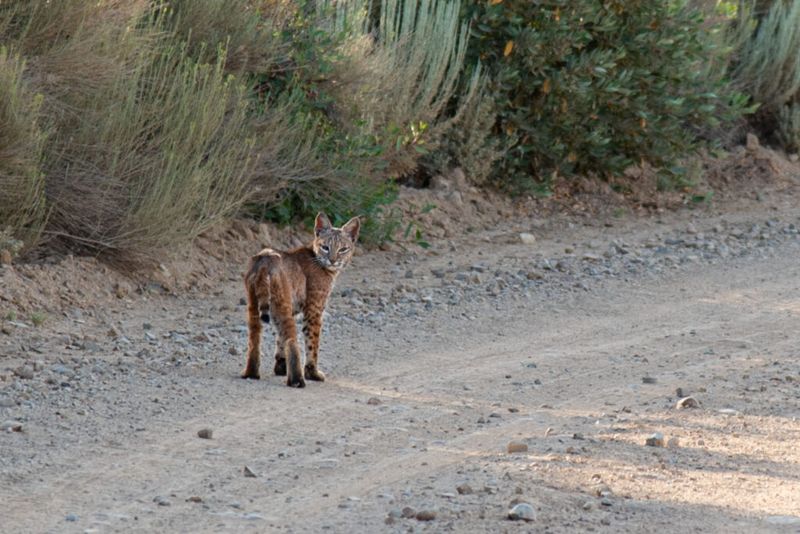
In the sprawling wilderness of California, bobcats roam freely, from the coastal forests to the Sierra Nevada mountains. These elusive creatures are masters of camouflage, blending into their habitats with ease.
Bobcats in California are often sighted near hiking trails and rural areas, where their presence is marked by tracks and occasional sightings.
If you’re exploring these areas, it’s important to respect their space, maintain a safe distance, and never approach or feed them. Keeping pets on a leash is also crucial to avoid unwanted encounters.
Texas
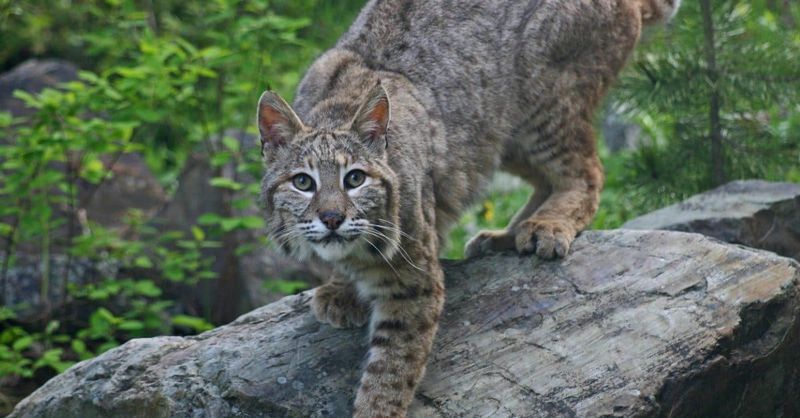
With its vast landscapes, Texas offers a diverse habitat for bobcats, ranging from deserts to forests. These adaptable predators are often seen in rural and semi-urban areas, where they hunt for small prey.
Despite their predatory nature, bobcats are generally shy and avoid humans. However, they can occasionally wander into suburban areas.
To stay safe, avoid leaving pet food outside and secure garbage bins. If you encounter a bobcat, make noise to scare it away and give it plenty of room to escape.
Florida
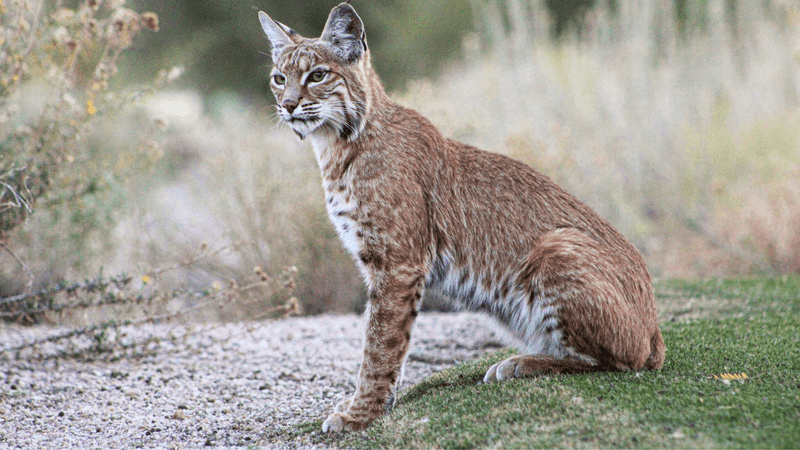
In the wetlands and swamps of Florida, bobcats find a rich environment teeming with prey. These agile felines are well-suited to the humid climate and dense vegetation.
Bobcats in Florida are known for their elusive nature, often hiding in the shadows and underbrush. They are most active during dawn and dusk, when they hunt small animals.
To avoid encounters, be cautious when exploring wetlands, keep pets on a leash, and make noise to alert animals to your presence. Respecting their habitat is key to coexistence.
Arizona
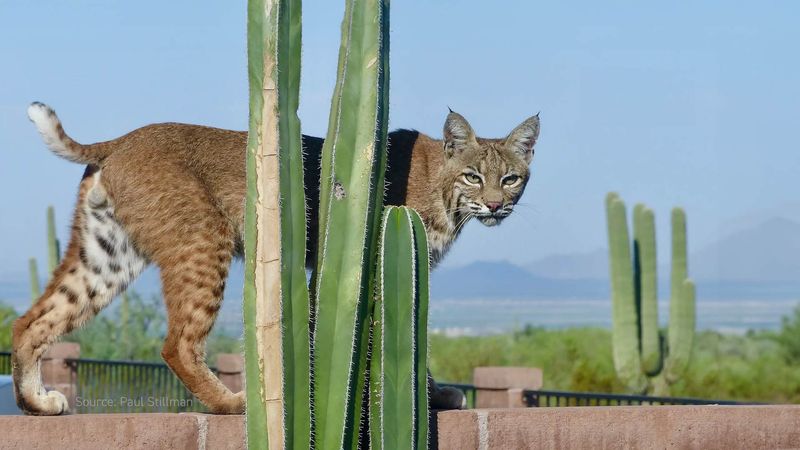
Arizona’s arid deserts and rocky landscapes provide a perfect home for bobcats, who thrive in these challenging environments. Their spotted coats offer excellent camouflage against the desert backdrop.
In Arizona, bobcats are most commonly found in the Sonoran Desert, where they are part of the diverse wildlife. They are solitary animals, often seen alone or with their young.
If hiking in these areas, stay on trails and be aware of your surroundings. Avoid approaching bobcats, and ensure that trash is securely stored to prevent attracting them.
New Mexico
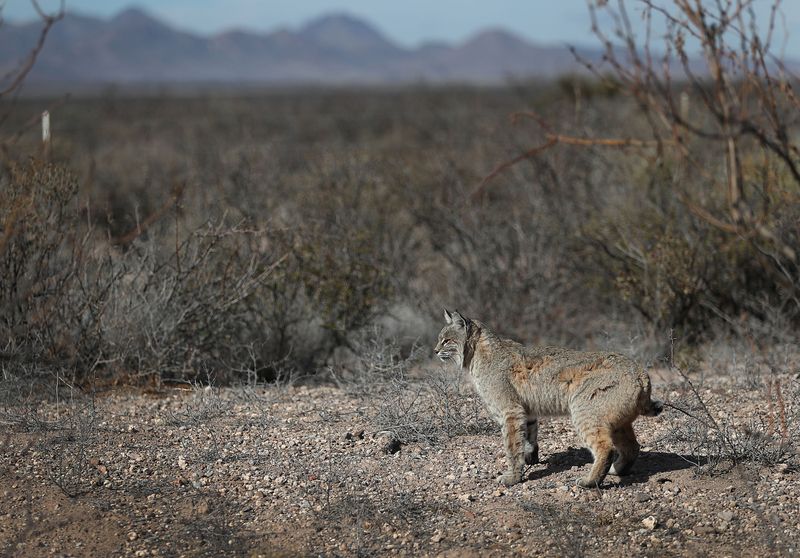
New Mexico’s canyons and mesas provide a dramatic backdrop for the elusive bobcat. These solitary hunters are well-adapted to the region’s varied terrain, from high deserts to forested mountains.
Bobcats in New Mexico are primarily nocturnal, making them a rare sight during the day. However, their tracks and signs are often found along trails and in remote areas.
If exploring these wild places, it’s wise to keep a respectful distance and avoid leaving food scraps behind. Being mindful of their presence ensures a safe experience for both humans and wildlife.
Colorado
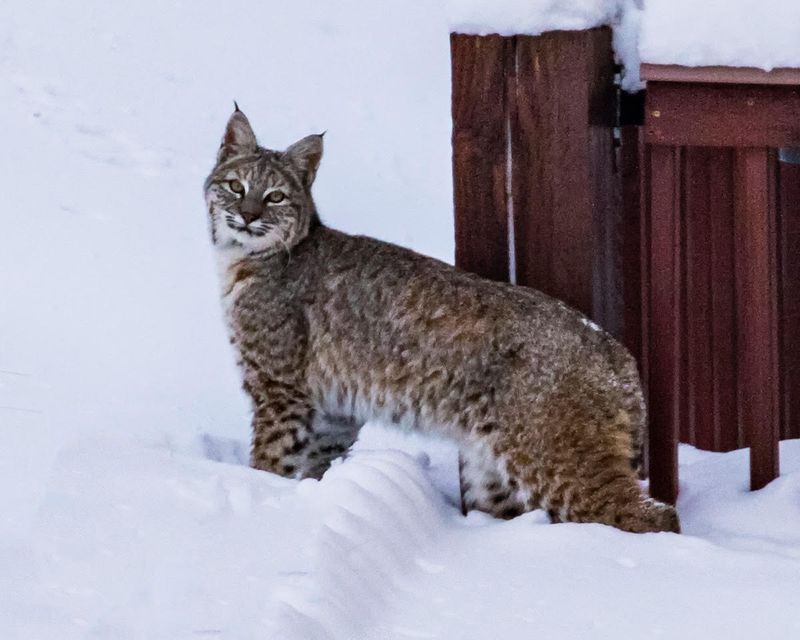
In Colorado’s majestic mountains, bobcats thrive in the cold, alpine environment. Their thick fur and keen senses make them adept hunters, even in snowy conditions.
These elusive cats are often found in remote areas, where they blend seamlessly into the rocky landscape. Despite their solitary nature, bobcats are an integral part of Colorado’s wildlife.
For those venturing into these regions, it’s important to be cautious and respect their territory. Keeping a safe distance and securing food supplies reduces the risk of encounters.
Montana
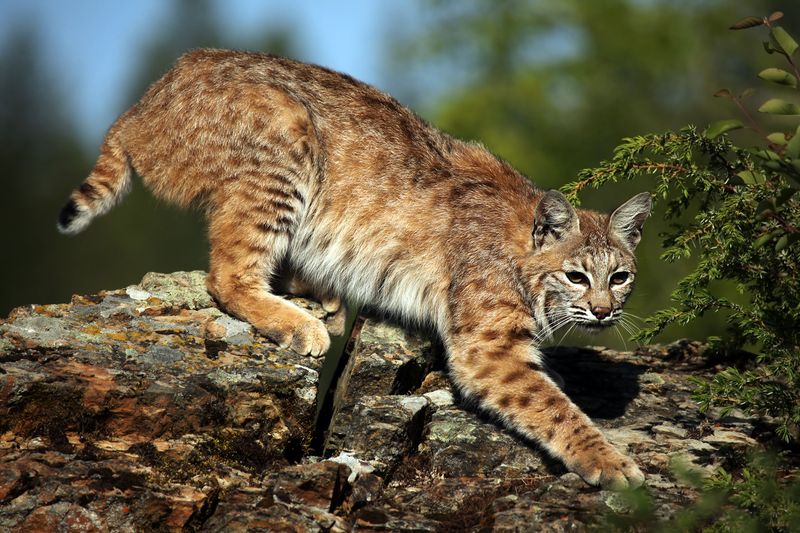
Montana’s wide-open spaces and rugged terrain provide an ideal habitat for bobcats. These stealthy predators are well-suited to the state’s diverse landscapes, from prairies to forests.
In Montana, bobcats are most active during twilight, when they hunt for small mammals and birds. Their presence is often indicated by tracks and scat.
Hikers and campers should be aware of their surroundings and keep food stored properly. Giving bobcats the respect they deserve ensures harmonious encounters in the wild.
Wyoming
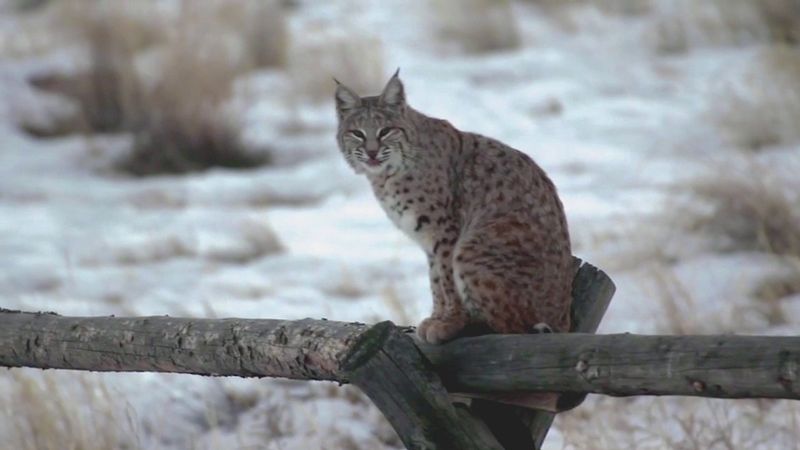
In the expansive plains and rugged hills of Wyoming, bobcats find a home rich with hunting opportunities. These adaptable cats are skilled at navigating the state’s varied environments.
Bobcats in Wyoming are often seen at dawn or dusk, when they are most active. Their keen senses make them effective hunters, even in open landscapes.
To avoid attracting bobcats, campers should store food securely and keep campsites clean. Observing these majestic creatures from a distance helps maintain a safe and respectful interaction.
Utah
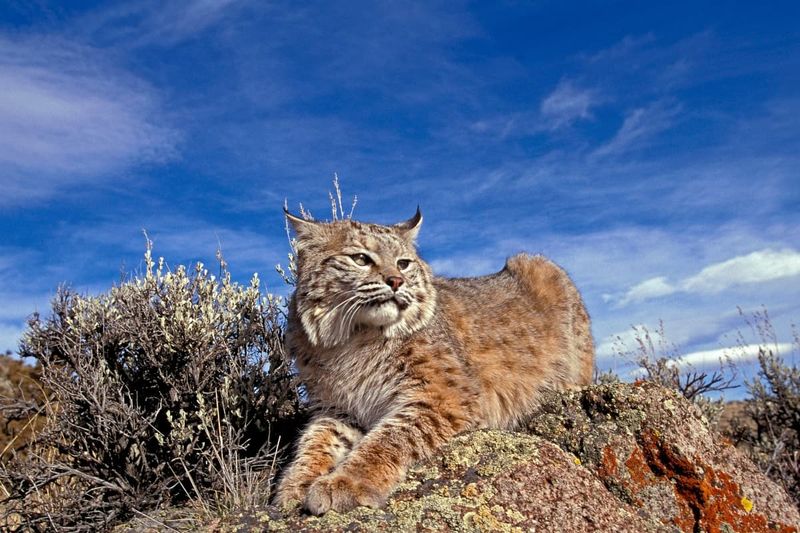
Utah’s deserts and rocky outcrops are a perfect playground for bobcats, who thrive in these rugged environments. Their agility and sharp senses make them formidable predators.
In Utah, bobcats are often spotted in national parks and wilderness areas, where they coexist with other native wildlife. They are solitary animals, rarely seen with others except during mating season.
When hiking, it’s crucial to stay on trails and avoid approaching wildlife. Respecting their natural habitat ensures that bobcats can continue to thrive in peace.
Nevada
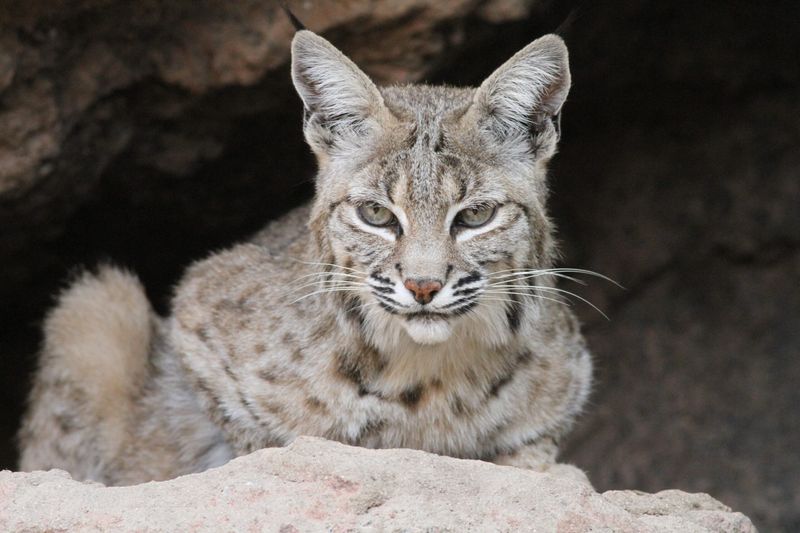
The arid landscapes of Nevada offer a challenging yet rewarding environment for bobcats. These solitary hunters are adept at surviving in the harsh desert climate.
Bobcats in Nevada are known for their elusive nature, often staying hidden during the day and becoming active at night. They are skilled hunters, preying on small mammals and birds.
To avoid encounters, it’s essential to keep campsites clean and food stored securely. Observing wildlife from a distance ensures a safe experience for both humans and animals.
Oregon
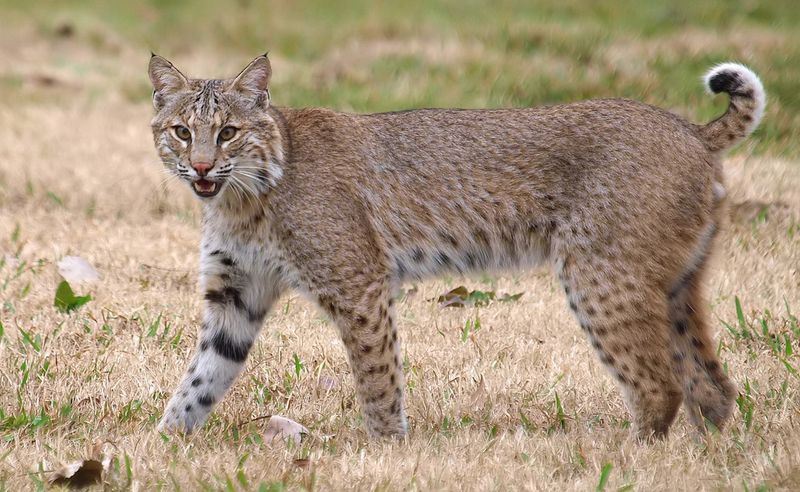
Oregon’s lush forests and coastal regions provide a rich environment for bobcats, who thrive in the state’s dense vegetation. Their keen senses and agility make them formidable hunters.
In Oregon, bobcats are often found near rivers and streams, where they hunt for small animals and birds. They are most active during twilight, when their camouflage is most effective.
Visitors to these areas should respect wildlife and maintain a safe distance. Keeping pets on a leash and storing food securely helps prevent unwanted encounters.
Washington
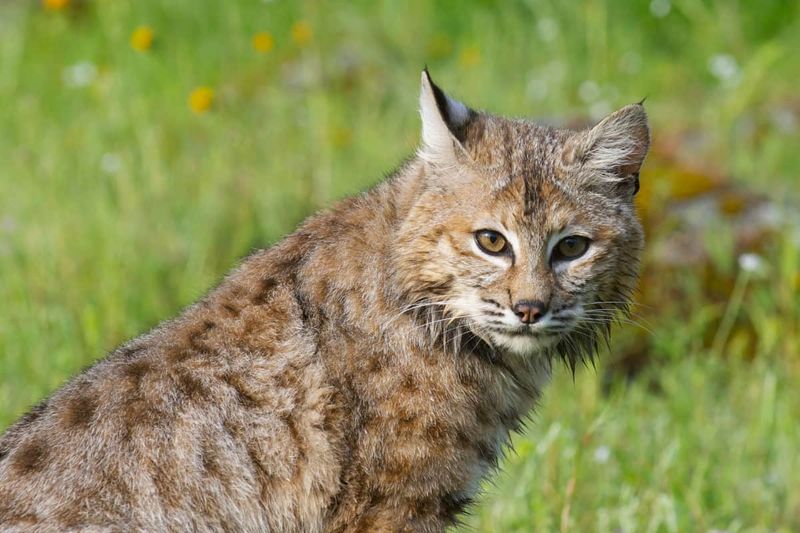
Washington’s diverse landscapes, from forests to mountains, offer a perfect habitat for bobcats. These solitary animals are well-adapted to the state’s varied climate and terrain.
Bobcats in Washington are often seen near wooded areas and rural regions, where they hunt for small prey. Their elusive nature makes them a rare sight, but their tracks are common.
To stay safe, hikers should stay on trails and avoid approaching wildlife. Respecting the natural environment ensures that bobcats can continue to thrive in their habitat.
Minnesota
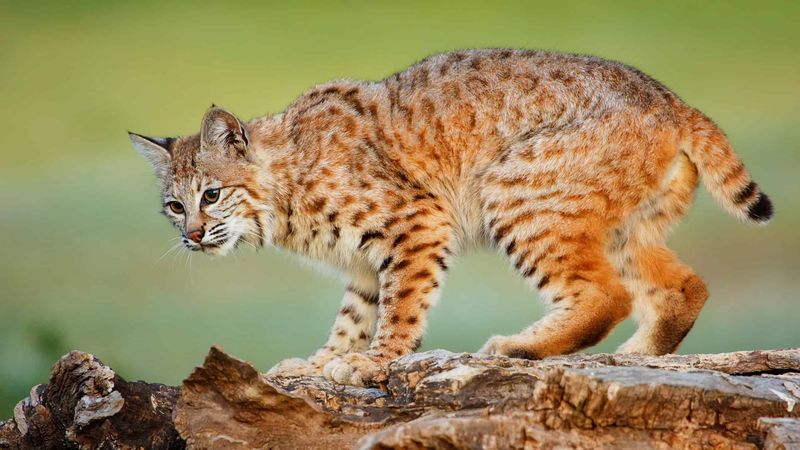
In Minnesota’s expansive forests and wetlands, bobcats find a haven rich with prey and shelter. These adaptable felines are well-suited to the region’s harsh winters and varied landscapes.
Bobcats in Minnesota are often seen near water sources and wooded areas, where they hunt small mammals and birds. They are most active during dawn and dusk.
To avoid encounters, it’s important to respect their space and keep a safe distance. Storing food securely and keeping pets on a leash reduces the risk of attracting these elusive creatures.
Wisconsin
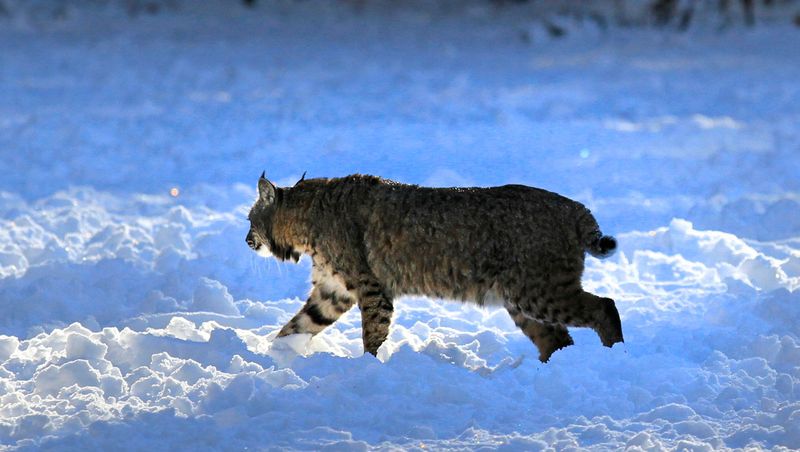
Wisconsin’s forests and river valleys offer a thriving habitat for bobcats, who are adept at navigating the state’s varied terrain. These solitary hunters are skilled at blending into their surroundings.
In Wisconsin, bobcats are often found near wooded areas and farmlands, where they prey on small animals. They are most active at night, making sightings rare but tracks common.
To ensure safety, outdoor enthusiasts should store food securely and maintain a safe distance from wildlife. Observing from afar helps maintain a peaceful coexistence.
Michigan
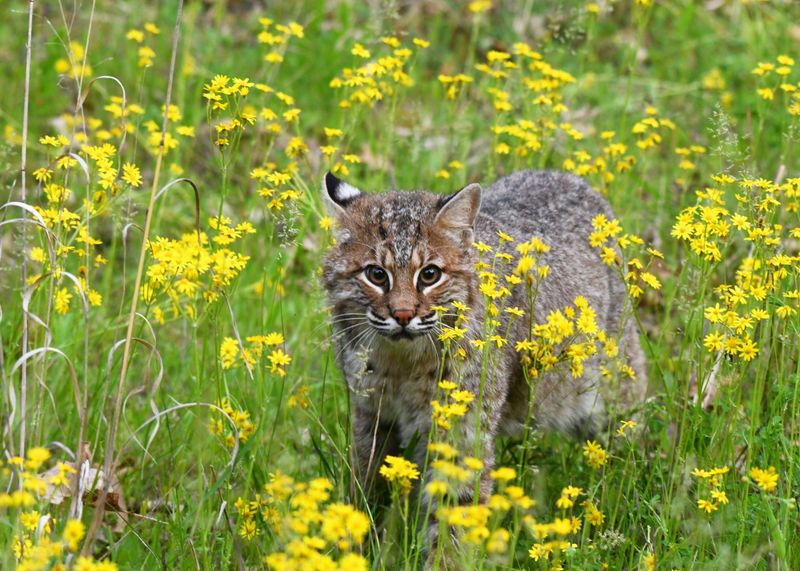
Michigan’s diverse landscapes, from forests to shorelines, provide a rich environment for bobcats. These elusive predators are well-suited to the state’s varied climate and terrain.
Bobcats in Michigan are often found in remote areas, where they hunt for small mammals and birds. Their tracks are a common sight along trails and in wooded regions.
For those exploring these areas, respecting bobcats’ space and keeping a safe distance is crucial. Securing food supplies and keeping pets on a leash helps prevent unwanted interactions.
North Carolina
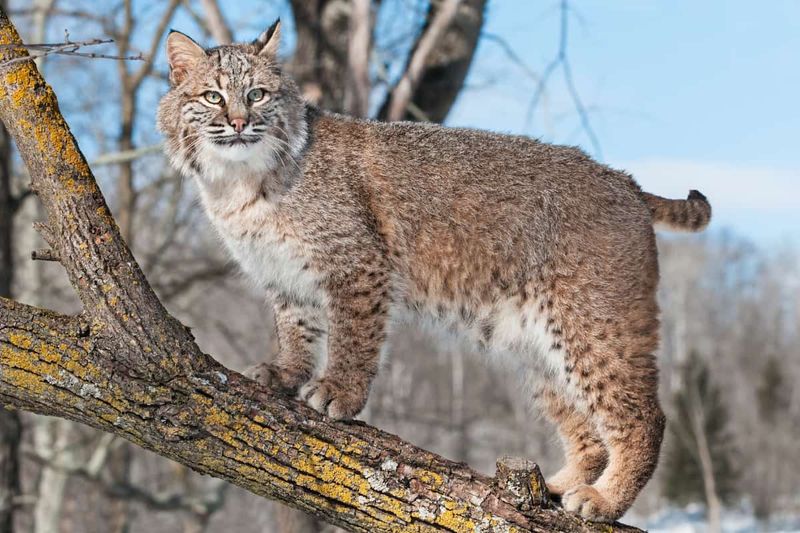
In the mountains and forests of North Carolina, bobcats find a suitable home rich with prey and cover. These agile predators are well-adapted to the state’s diverse landscapes.
Bobcats in North Carolina are often seen near wooded areas and rural regions, where they hunt for small animals. Their presence is marked by tracks and occasional sightings.
To stay safe, hikers should maintain a respectful distance and avoid approaching wildlife. Keeping food secured and pets on a leash helps ensure a harmonious coexistence.
South Carolina
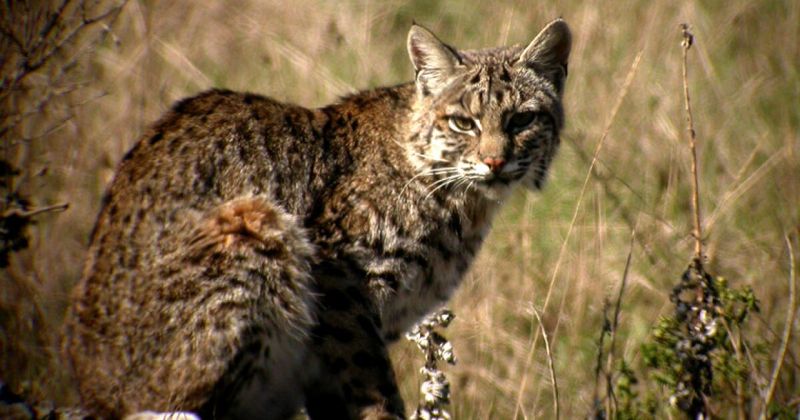
South Carolina’s lowlands and forests offer a rich environment for bobcats, who thrive in the state’s varied landscapes. These solitary hunters are skilled at navigating dense vegetation.
In South Carolina, bobcats are often found near water sources and rural areas, where they hunt for small prey. Their elusive nature makes them a rare sight during the day.
To avoid encounters, it’s important to respect their space and maintain a safe distance. Securing food and keeping pets on a leash reduces the risk of attracting these elusive creatures.
Georgia
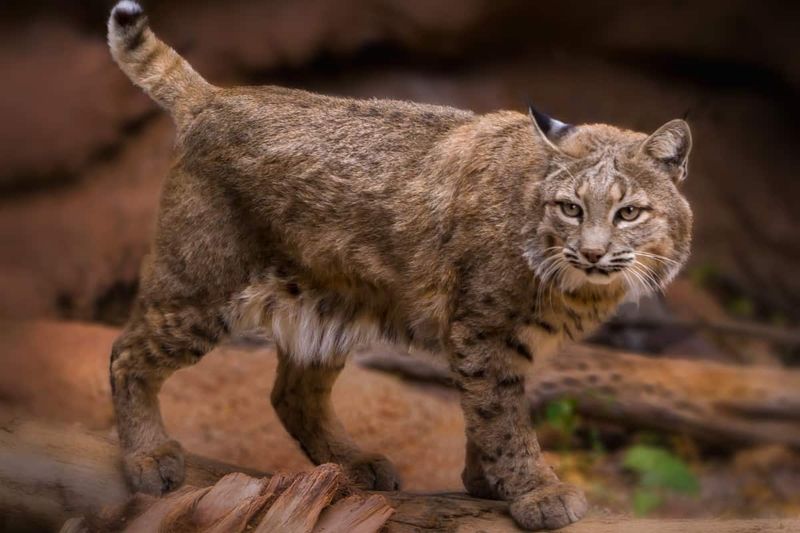
Georgia’s forests and swamps provide a diverse habitat for bobcats, who are adept at thriving in the state’s varied environments. These solitary predators are skilled hunters, preying on small mammals and birds.
Bobcats in Georgia are often found near wooded areas and rural regions, where they coexist with other wildlife. They are most active during twilight, when their camouflage is most effective.
To ensure safety, outdoor enthusiasts should maintain a safe distance and avoid approaching wildlife. Keeping food secured helps prevent unwanted encounters.
Alabama
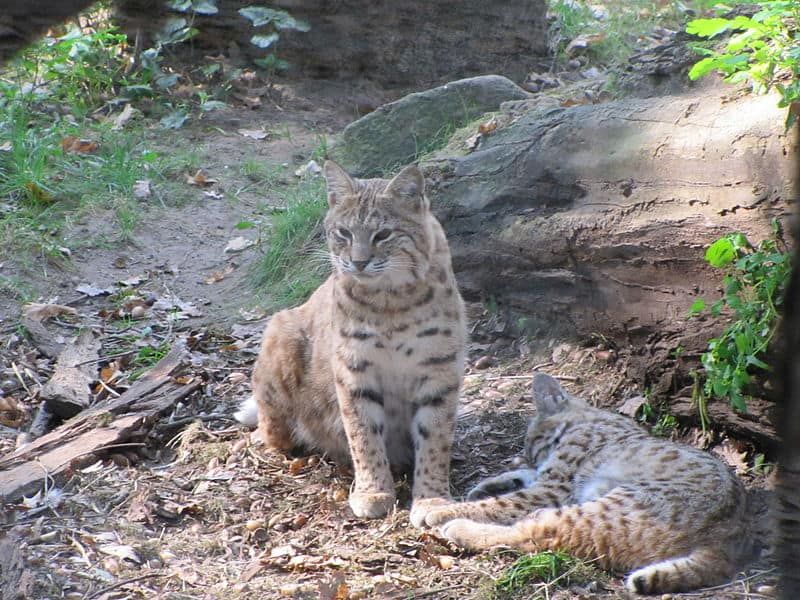
In the rural landscapes of Alabama, bobcats find a home rich with hunting opportunities. These agile predators are well-suited to the state’s varied terrain, from forests to farmlands.
Bobcats in Alabama are often seen near wooded areas and rural regions, where they hunt for small prey. Their presence is marked by tracks and occasional sightings.
To stay safe, it’s important to respect their space and maintain a safe distance. Securing food and keeping pets on a leash helps ensure a harmonious coexistence.
Tennessee
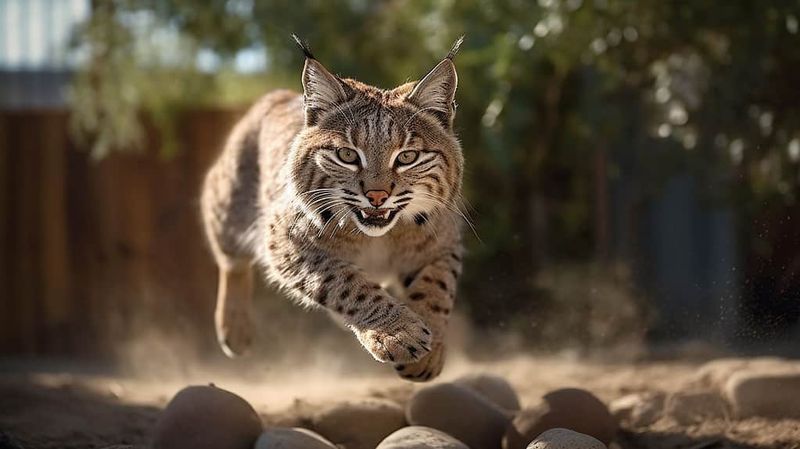
Tennessee’s rolling hills and forests provide a perfect habitat for bobcats, who are adept at navigating the state’s varied environments. These solitary hunters are often seen in rural and remote areas.
In Tennessee, bobcats are most active during dawn and dusk, when they hunt for small mammals and birds. Their tracks and signs are common in wooded areas.
Hikers and campers should be aware of their surroundings and keep food stored properly. Observing these majestic creatures from a distance helps maintain a safe and respectful interaction.
Missouri
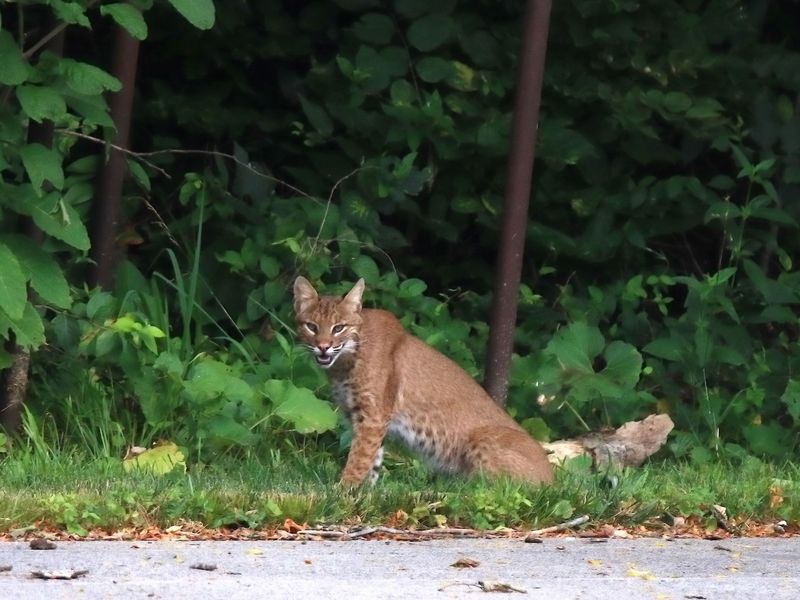
Missouri’s forests and river valleys offer a thriving habitat for bobcats, who are adept at navigating the state’s varied terrain. These solitary hunters are skilled at blending into their surroundings.
In Missouri, bobcats are often found near wooded areas and farmlands, where they prey on small animals. They are most active at night, making sightings rare but tracks common.
To ensure safety, outdoor enthusiasts should store food securely and maintain a safe distance from wildlife. Observing from afar helps maintain a peaceful coexistence.
Pennsylvania
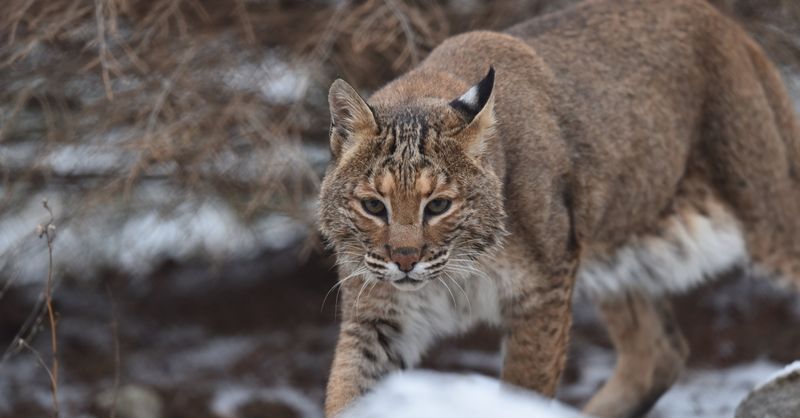
In the forests and mountains of Pennsylvania, bobcats find a suitable habitat rich with prey and cover. These elusive predators are well-suited to the state’s diverse landscapes.
Bobcats in Pennsylvania are often seen near wooded areas and rural regions, where they hunt for small animals. Their presence is marked by tracks and occasional sightings.
To stay safe, hikers should maintain a respectful distance and avoid approaching wildlife. Keeping food secured and pets on a leash helps ensure a harmonious coexistence.

